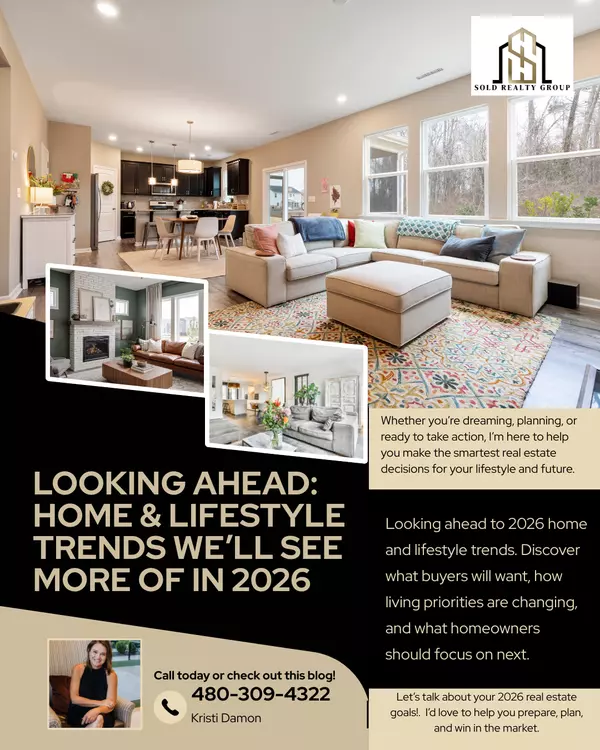Pros & Cons of Buying a Home in a Master-Planned Community
Master-planned communities (MPCs) are becoming increasingly popular among homebuyers looking for a well-structured neighborhood with amenities and a sense of community. But is buying a home in an MPC the right choice for you? Let’s explore the pros and cons to help you make an informed decision.
Pros of Buying in a Master-Planned Community
1. Abundance of Amenities
One of the biggest advantages of MPCs is the variety of amenities they offer. These often include:
-
Parks and walking trails
-
Community pools and clubhouses
-
Fitness centers
-
Shopping and dining options within or near the community
These conveniences make daily life easier and more enjoyable for residents.
2. Well-Designed Infrastructure
MPCs are carefully planned with roadways, green spaces, and public areas designed for functionality and aesthetic appeal. Unlike some traditional neighborhoods, these communities are built with long-term growth in mind, ensuring accessibility and proper zoning.
3. Strong Sense of Community
Many MPCs have homeowners’ associations (HOAs) that organize events, maintain common areas, and promote a neighborly atmosphere. If you value social engagement and neighborhood involvement, an MPC could be a great fit.
4. Higher Property Values
Because of their planned nature, MPCs tend to maintain property values better than some traditional neighborhoods. The HOA regulations help ensure homes are well-maintained, reducing the risk of declining property values.
5. Enhanced Safety and Security
Many MPCs feature gated entries, private security patrols, and community watch programs. This can provide an added sense of safety and peace of mind for residents.
Cons of Buying in a Master-Planned Community
1. HOA Fees and Regulations
While HOAs help maintain the community’s aesthetics and property values, they come with rules and fees. Some drawbacks include:
-
Monthly or annual HOA dues that add to your housing costs
-
Restrictions on exterior home modifications, landscaping, and parking
-
Potential fines for violating HOA rules
Before buying, review the HOA guidelines to ensure they align with your lifestyle.
2. Limited Customization
MPCs often have a cohesive architectural theme, which means homeowners may face restrictions on customization. If you prefer a home with unique features or a non-traditional design, an MPC might not be the best fit.
3. Potentially Higher Home Prices
Due to the amenities, location, and overall design, homes in MPCs can sometimes have higher price tags compared to homes in non-planned neighborhoods. Be sure to evaluate whether the added benefits justify the cost.
4. Less Privacy
MPCs tend to have homes built closer together, leading to smaller lot sizes and reduced privacy compared to standalone rural or suburban properties. If having a large yard and extra space between neighbors is a priority, you may want to consider alternative housing options.
5. Market Demand and Competition
Popular master-planned communities can attract high demand, which may lead to competitive bidding on available homes. Additionally, future developments within the community could impact resale value and market conditions.
Is a Master-Planned Community Right for You?
Choosing to buy a home in a master-planned community ultimately depends on your lifestyle preferences and financial situation. If you value convenience, amenities, and a strong community atmosphere, an MPC could be a fantastic choice. However, if you prefer flexibility, lower costs, and more privacy, you might want to explore other options.
📢 Thinking about buying a home in a master-planned community? Let’s find the perfect neighborhood for you! Contact us today to start your search. 🏡✨
Categories
- All Blogs (239)
- Arizona Real Estate & Local Market (19)
- Buying, Selling & Investing Tips (77)
- Home Improvement Ideas (40)
- HOME MAINTENACE TIPS (22)
- Home Selling Strategies (26)
- Legal & Financial Consideration (11)
- Listing (5)
- Living in Queen Creek (15)
- LIVING IN SANTAN VALLEY (12)
- Local Business Spotlight (2)
- Local Events & Activities (3)
- Question & Answers (1)
- Real Estate Education & Empowerment (8)
- SANTAN VALLEY (1)
- Sold Selling Method: Perception (5)
- Sold Selling Method: Presentation (5)
- Sold Selling Method: Price (3)
- Staging (14)
- Sustainability and Green Living (4)
Recent Posts










GET MORE INFORMATION


